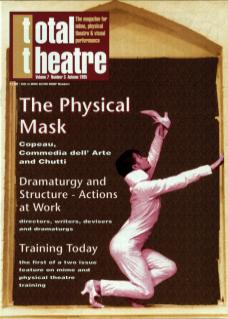Dramaturgy is the science of dramatic composition and presentation. The dramaturgs in Europe are full-time advisors employed by theatre companies. They recommend writers and plays to the directors, they consult with playwrights commissioned by the companies, often helping them in shaping, timing and constructing their scripts. In the case of classical plays written by Shakespeare, Goldoni, Molière, etc, the work of the dramaturg often includes some sort of ‘modernisation’, i.e. making the play consumable for audiences of today; they might cut or rearrange parts or retranslate lines. They are aware of the structure, rhythm and timing required to create a contemporary piece of theatre for contemporary audiences.
Then, directors are left alone with the ready scripts, the casts, and the participating artists. The dramaturgs might be asked to sit in on the rehearsals at a later stage, they are the ‘outside eye’. They might suggest some changes in rhythm, they might help the director in solving structural problems, in transitions between scenes, breaking lengthy monologues. But at this stage, the performance is in the hands of the creators, rather than that of the ‘scientist’ (the dramaturg).
In my experience, experimental theatre – and I am thinking of mime, movement, and physical theatre – has not employed traditional dramaturgs for the following reasons.
First of all, the language of the physical performance does not rely on words, and may not even include words at all. Instead of monologues, dialogues, and verbalised conflicts between characters, the building blocks of its communication are gestures, movements, usage of space, visual or physical metaphors, light, shadow, symbolic objects, and yes, words too might be included. If traditional dramaturgy is used, e.g. set rules of timing, or constructed development of conflicts and resolutions, there is danger that these building blocks may become illustrative only, thus losing their metaphorical and symbolic qualities.
Physical theatre aims to communicate through the senses rather than the mind. The exploration of this communication is individual and subjective, and the effect is unpredictable and hazardous. Physical theatre has its own special and unique dramaturgy, individually tailored to each performance depending on the message it wants to convey, the topic, the narrative (if it has one), the style, and maybe even the length of the performers' legs. Who knows what the appropriate ‘scientific guidelines’ are?
If traditional dramaturgy is used... there is danger that these building blocks may become illustrative only, losing their metaphorical and symbolic qualities
Because of the experimental nature of most physical/visual theatre, the rules of traditional dramaturgy are considered not necessary or essential to that artistic process. Performers and directors explore non-traditional ways and structures in order to build a communication between them and their audiences' senses, rather than merely presenting a ‘readily available’ piece of theatre. Both performer and director, in this artform, have to have a specific training in physical theatre, including research and practical work with body, space, rhythm, timing, text, etc, and including the process of group devising. They are developing a form of ritual which is ‘beyond science’, often accidental, often ‘out of shape’, often illogical, because the logic of communication with our senses is different to that with our mind.
So here we are with the question: what is the role of dramaturg in physical theatre? From my personal experience, dramaturgs who undertake the same training and research as performers and directors, may as well become directors themselves. Some of the objectives of the director in physical theatre are similar to that of the dramaturg in traditional theatre. To guide the spectator's focus, the director participates in structuring the performers' actions and the connection of sequences he or she is aware of, the rhythm ranging from individual gestures to the overall rhythm of the total piece.
In addition to participating in ‘writing’ the piece and guiding the improvisations, the director is the ‘outside eye’. His or her comments and proposals are based on their practical and theoretical knowledge with regard to what physical theatre means or should mean.
Who presumes to know the rules?
Kriszta Bodonyi performed for nearly twenty years with Miklos Kollo's Domino Mime and Dance Theatre Company in Hungary and in Europe. She now lives and works as a director and freelance lecturer in Mime and Physical Theatre in Australia and established a contemporary Mime school in Perth, called Hush. She recently directed a collaborative project with Chris Rowbury (Scala Revue Fantasia, Cardiff) a Physical Theatre piece, Endangered Men, concluding in a successful season in Perth in June 1995.

